Growing edible cacti in pots presents a delightful opportunity for culinary enthusiasts looking to expand their palate with unconventional yet flavorful ingredients.
These succulent plants are not only an aesthetically pleasing addition to home decor but also offer a unique alternative to mainstream fruits and vegetables.
Incorporating cacti into your diet opens up a world of robust flavors and textures, all while introducing a variety of nutrients to your meals.
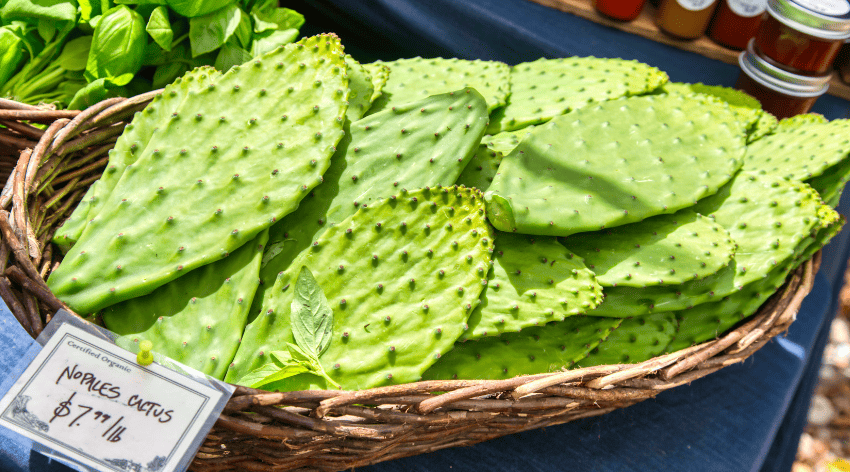
Edible cacti varieties, such as the prickly pear or dragon fruit, are gaining popularity within culinary circles for their versatility and health benefits.
These drought-tolerant plants require minimal maintenance, making them perfect for indoor gardening and accessible for those looking to cultivate their own culinary delights.
By integrating edible cacti into your diet, you embark on an exploration of taste that challenges conventional culinary norms and enriches your dining experience.
Adapting cacti to household pot cultivation and utilizing their fruits, pads, or flowers in recipes can transform an ordinary meal into a sophisticated dish.
Chefs and home cooks alike are discovering the potential of these desert dwellers as they experiment with new ingredients to elevate their cuisine.
The succulent flesh of cacti, when prepared properly, can add not only a burst of color but also a nutritious component to various dishes, inspiring a fresh approach to healthy and exciting cooking.
Overview of Edible Cacti
Edible cacti have gained popularity as both a culinary adventure and a way to incorporate nutrient-dense foods into one’s diet.
Among the numerous types of edible cacti, the prickly pear, barrel cactus, and dragon fruit stand out for their culinary value and ease of cultivation in pots.
- Prickly Pear (Opuntia): Known for its sweet, ruby-red fruits and tender green pads known as nopales, the prickly pear cactus is a versatile desert plant. The nopales are often used in Mexican cuisine, commonly grilled or boiled and incorporated into salads and tacos.
- Barrel Cactus: Smaller than other cacti, it produces edible flowers and fruits. While less commonly used in cooking, it’s a remarkable example of desert plants adapting to provide sustenance.
- Dragon Fruit (Hylocereus): This cactus is celebrated for its vibrant pink or yellow skin and speckled flesh, which boasts a flavor reminiscent of a blend of pear and kiwi. It grows on vine-like cacti, making it suitable for larger pots or climbing frames.
- Saguaro (Carnegiea gigantea): Although not commonly cultivated in pots due to its massive size, the saguaro’s fruit is edible and traditionally harvested by Native Americans living in the Sonoran Desert.
When growing these cacti in containers, it’s essential to provide them with well-draining soil, adequate sunlight, and careful watering to mimic their native arid habitats.
These desert dwellers offer a unique blend of flavors and textures, enhancing culinary dishes while contributing to food diversity.
Which varieties of cacti are safe and recommended for culinary use when grown in pots?
When it comes to cultivating cacti for eating, several varieties are well suited for pot growth due to their manageable size and edible components. These varieties offer a unique taste and are often used in various culinary dishes.
Prickly Pear (Opuntia species): Prickly pear cacti produce both edible pads, known as nopales, and colorful fruits called tunas.
- Suitable for pots: Dwarf varieties like Opuntia microdasys
- Culinary usage: Pads and fruits
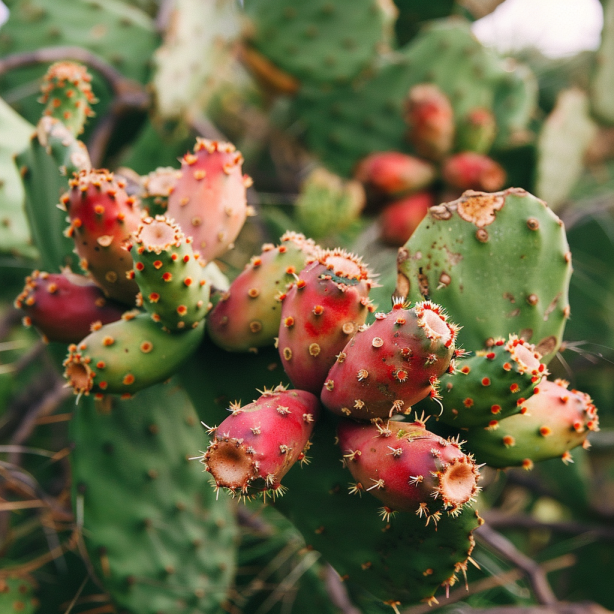
Dragon Fruit (Hylocereus species): Known for its vibrant pink or yellow skin and speckled flesh, dragon fruit is both ornamental and delicious.
- Suitable for pots: Smaller climbing varieties
- Culinary usage: Fruit
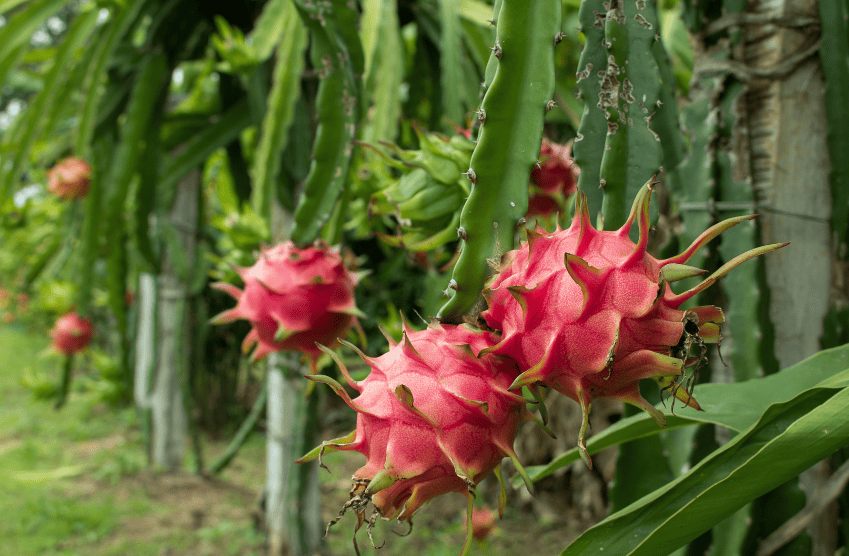
Barrel Cactus (Ferocactus species): While not commonly eaten, certain barrel cacti yield small edible fruit.
- Suitable for pots: Young plants or smaller species
- Culinary usage: Fruit
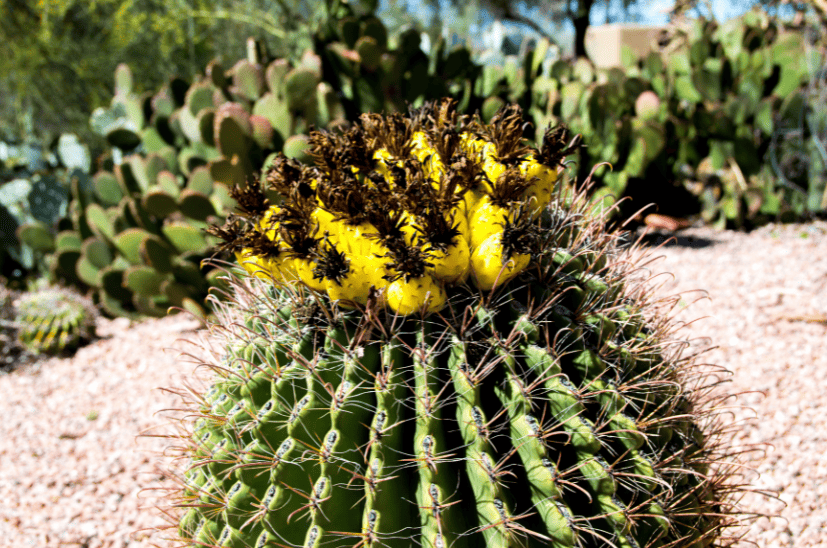
It’s important to note that all edible cacti must be properly prepared to remove spines and potentially irritating skin.
Pregnant individuals and those with health concerns should consult a healthcare professional before consuming cacti.
Moreover, always verify the identification of cactus species to ensure they are not only safe to consume but also legally permissible, as some may be protected or have psychoactive properties.
Care should also be taken to grow cacti in pots using suitable soil, proper drainage, and adequate sunlight to ensure healthy growth—the prerequisites for any potential culinary use.
How do you prepare potted edible cacti for consumption?
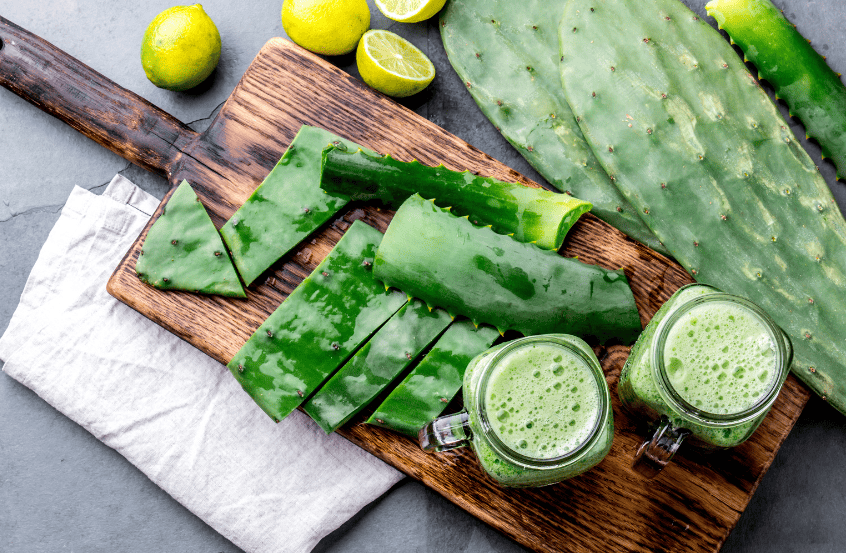
Preparing potted edible cacti for consumption involves several careful steps to ensure safety and quality. Below is a guide on how to prepare these unique plants for a culinary experience.
- Selecting the Cacti: Choose cacti species known to be edible, such as the Nopal (Opuntia spp.), which is commonly consumed and easily identifiable.
- Harvest: Ideally, one should harvest the young tender pads (nopales) early in the morning when they are full of moisture.
- De-spining:
- Lay the pad flat.
- Trim the edges to remove the thickest spines.
- Use a vegetable peeler or knife to scrape away the smaller spines and nodules.
- Washing: Rinse the pads thoroughly to remove any remaining spines and debris.
- Cutting: Cut the cleaned pads into strips or dice, depending on the recipe.
- Cooking: Boil or grill until tender—a process that can take approximately 15 to 20 minutes. Cooking can significantly minimize any slime-like consistency.
For a simple but tasty dish, one might sauté the boiled strips with onions, tomatoes, and jalapeños, creating a traditional Mexican dish called “nopalitos.”
When handling cacti, always wear thick gloves and be cautious to avoid injury from the spines.
The preparation process is crucial to avoid any unpleasant textures or flavors and to ensure a safe and enjoyable dish.
When prepared correctly, edible cacti offer a culinary experience that’s both unique and nutritious, providing a good source of fiber, vitamins, and minerals.
Selecting the Right Cacti for Pot Cultivation
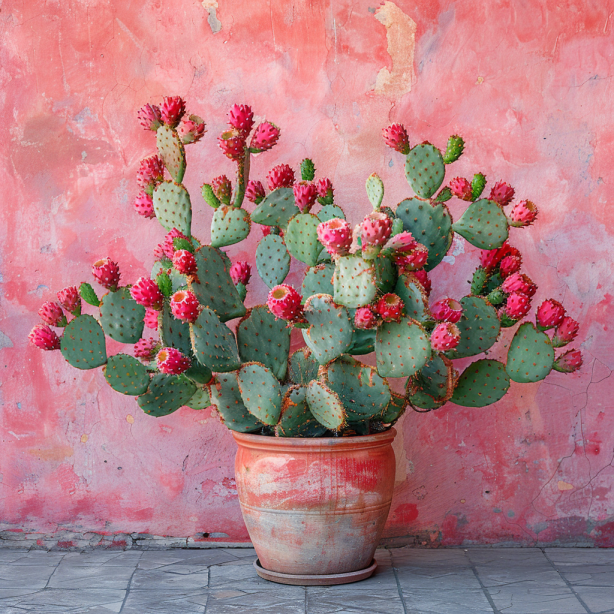
When cultivating edible cacti in pots, selecting species that are well-suited to container life is essential. One must consider their adaptability to confinement, visual characteristics, and specific growth and care needs for a successful indoor or outdoor cactus garden.
Adaptation to Pots
Certain cacti inherently adapt better to pot cultivation due to their size and growth habits.
Prickly pear cactus (Opuntia spp.) is often ideal for containers because it remains relatively compact. In contrast, the saguaro cactus (Carnegiea gigantea) is typically unsuitable due to its large size and extensive root system.
Key considerations for pot adaptation include:
- Size: Select species that maintain a manageable size.
- Root system: Opt for cacti with less extensive root systems.
Aesthetic Appeal
Edible cacti also offer various visual features that can enhance your space.
The barrel cactus (Ferocactus spp.), for instance, is known for its striking, round shape and can become a focal point in a kitchen garden.
While considering the aesthetic appeal, evaluate:
- Shape: Unique forms can create visual interest.
- Color: Vibrant flowers or fruits can add splashes of color.
Growth and Care Requirements
Each cactus variety comes with specific needs for temperature, watering, and soil that must be considered for successful growth in a pot.
The prickly pear cactus, for example, requires well-draining soil and moderate watering.
Details to be aware of include:
- Temperature: Cacti often prefer warmer climates, but some can tolerate lower temperatures.
- Watering: Over-watering is a common mistake with potted cacti; ensure proper drainage.
- Soil: Use a special cactus mix or create your own with sand and potting soil for best results.
Choosing the appropriate containers is also vital. They should be only slightly larger than the cactus and have adequate drainage to prevent root rot.
Selecting suitable cacti and providing the right care and environment can result in a delightful and edible display in your home.
Nutritional Benefits of Edible Cacti
Edible cacti, specifically the young leaves and fruits, offer a bounty of nutritional advantages, including a rich provision of essential vitamins, minerals, and dietary fiber. They are recognized for their health-promoting properties and impressive antioxidant profile.

Vitamins and Minerals Content
Edible cacti are a good source of vitamins and minerals.
For instance, they provide vitamin C, which aids in immune function and skin health. The cactus fruit, known as prickly pear, is particularly noted for its vitamin C content.
Minerals such as magnesium and iron are also present in cacti, supporting vital bodily functions such as muscle movements and oxygen transport.
Fiber and Antioxidants
Dietary fiber from cacti contributes to digestive health, helping to maintain a regular bowel movement and potentially aiding in weight management.
Edible cacti are also rich in antioxidants, which combat oxidative stress and may reduce the risk of chronic diseases. The antioxidant properties of cacti are comparable to other high-antioxidant foods, making them a valuable inclusion in the diet.
Health Benefits and Therapeutic Uses
Edible cacti have been associated with multiple health benefits, including anti-inflammatory properties.
Regular consumption may support cardiovascular health and regulate blood sugar levels, which is particularly beneficial for individuals with type 2 diabetes. The medicinal food applications of cacti also extend to their use in traditional remedies, highlighting their therapeutic potential.
Cultivating Edible Cacti in Pots

Growing edible cacti in pots not only serves as a decorative hobby but also provides a sustainable food source that can be managed from the comfort of one’s home.
Proper soil composition, consistent watering, adequate sunlight, and appropriate temperature are essential for these plants to thrive and produce fruit.
Soil and Potting Mix
For edible cacti, it’s imperative to use a well-draining potting mix that mimics their natural habitat.
A mixture of sand, perlite, and compost provides the necessary drainage and nutrients. One might consider adding pumice or coarse gravel to improve aeration and prevent root rot.
Watering and Feeding
Cacti require less water than typical houseplants; over-watering is a common mistake.
They should be watered deeply yet sparingly, allowing the soil to dry completely between waterings. During the growing season, feeding with a diluted cactus fertilizer can support their nutritional needs.
Temperature and Sunlight
Most edible cacti seek bright, indirect sunlight and can flourish indoors, provided they are placed near a south-facing window.
They are tolerant to high temperatures, ideally between 70°F and 100°F, but must be protected from frost and abrupt temperature drops.
Pruning and Propagation
Pruning edible cacti is mostly minimal, done to remove dead or damaged tissue or to maintain size.
Simple propagation can be achieved by planting healthy cuttings in a suitable potting mix, allowing them to develop roots and become new, productive plants.
Harvesting and Preparing Edible Cacti
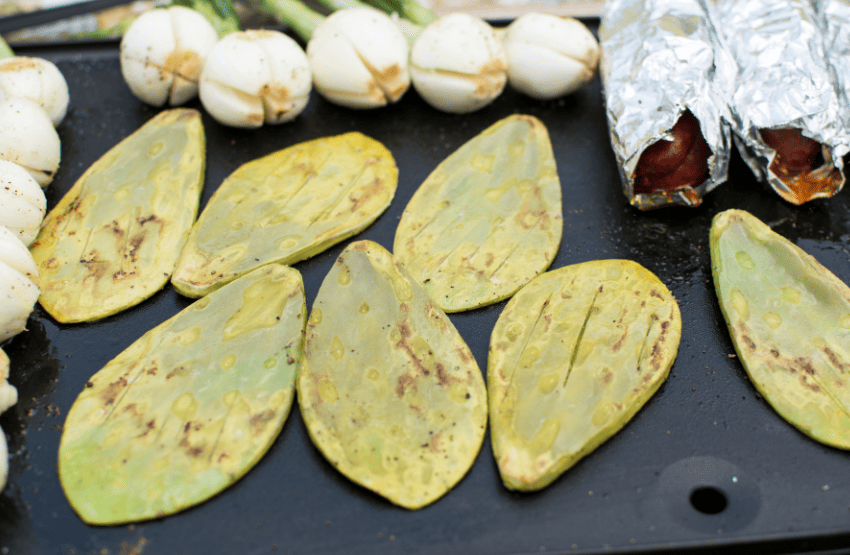
The cultivation of edible cacti in pots offers a unique culinary adventure, but it is crucial to handle the harvesting and preparation with care to ensure safety and taste.
Safe Harvesting Techniques
When harvesting edible cacti, safety is paramount due to the presence of sharp spines and tiny, hair-like glochids that can embed in the skin.
Wearing thick gardening gloves is essential, and using tools like tongs or a sharp knife can aid in cutting nopales (cactus pads) or tunas (prickly pear fruit).
One should carefully cut at the base where the pad or fruit connects to the main body, avoiding any unnecessary pressure that might cause the spines to detach and spread.
Cleaning and Removing Spines
After safely harvesting the cacti, the next step is to clean and remove the spines thoroughly.
This can be done by holding the nopales or tunas with tongs and gently scraping the spines off with a knife.
For stubborn glochids, placing the pads or fruits in a bowl of warm water and swishing them around can help loosen the tiny spines. It’s advisable to rinse the cacti several times to ensure that all the spines have been removed.
Preparation and Cooking Tips
Once the cacti are spine-free, they’re ready for preparation and cooking, which can vary depending on the specific cactus type and desired recipe.
Nopales are often diced or sliced into strips and can be sautéed to make a cactus salad or cactus tacos. They should be cooked until they are tender but still crisp, generally for about 10 minutes.
Prickly pear fruit, or tunas, can be juiced, blended, or boiled to create syrups and jams.
The sweet flavor of tunas pairs well with both sweet and savory dishes, making them a versatile ingredient in a variety of cactus recipes.
Incorporating Edible Cacti into Your Diet
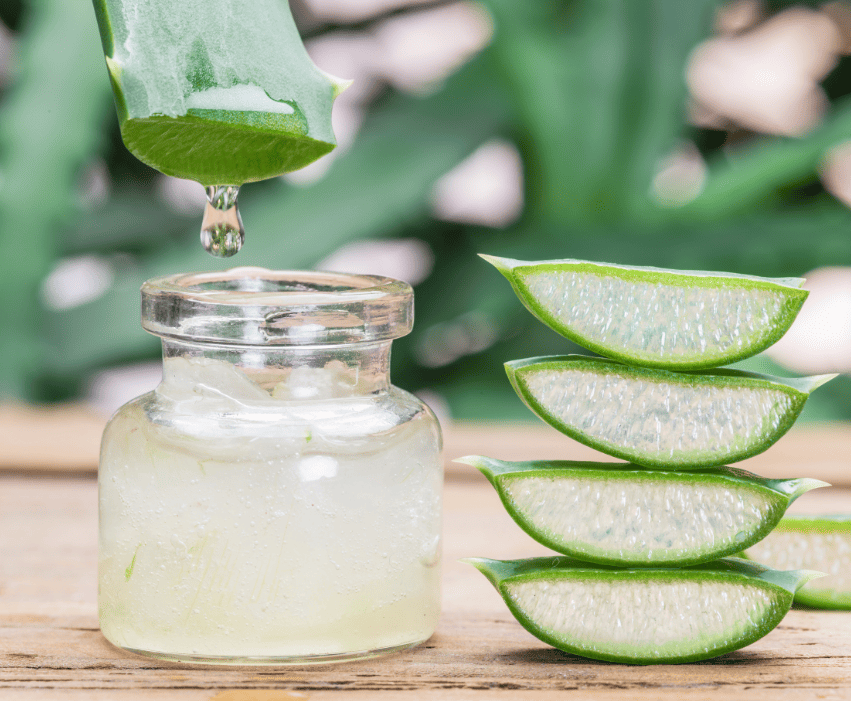

Edible cacti offer unique flavors and textures, making them a delightful addition to various dishes. They are not only a novel ingredient but also a sustainable food option for many.
Culinary Uses of Cacti
Edible cacti, such as the Prickly Pear and Dragon Fruit, can be transformed into various culinary delights.
They bring a unique taste to the table and can be incorporated into an array of cactus recipes.
For instance, the Prickly Pear is renowned for its sweet taste and can be used in making refreshing beverages or desserts.
On the savory side, the pads of certain cacti can be grilled and included in a cactus salad or as the star ingredient in cactus tacos.
With their versatility, these cacti are capable of elevating traditional dishes with a new twist.
- Cactus Salad: Dice grilled cactus pads and toss with tomatoes, onions, cilantro, and a splash of lime juice.
- Cactus Tacos: Fill corn tortillas with sautéed slices of cactus, topped with salsa verde and queso fresco.
Cacti as a Sustainable Food Source
Cacti require minimal water and thrive in harsh environments, which makes them a sustainable food source of interest, especially in arid regions that are facing water scarcity.
The ability to grow cacti in pots allows urban dwellers to cultivate edible cacti, bringing greenery to their homes and fresh produce to their kitchens.
By incorporating cacti into one’s diet, people can contribute to environmental sustainability while enjoying the unique flavors these plants provide.
The sustainable nature of cacti aligns them with the principles of eco-conscious eating, which is gaining momentum in today’s culinary world.
Edible Cacti Cultural Significance

Edible cacti have deep-rooted cultural importance, particularly in Native American traditions and Southwestern cuisine, where they’ve been a vital food source and a symbol of endurance.
Native American Traditions
Native American tribes, notably the Tohono O’odham people, have harvested cacti for centuries.
They are intrinsically connected to the saguaro cactus, which is native to the Saguaro National Park.
These cacti are not only a significant food source but also hold ceremonial value.
The Tohono O’odham’s annual saguaro fruit harvest concludes with the “Rain Ceremony,” which is believed to bring rain for the year’s crops.
Cacti in Southwestern Cuisine
Southwestern cuisine incorporates edible cacti as a key ingredient, celebrating them as culinary delights.
Prickly pears, for instance, are used in various dishes and beverages, from candies and jellies to savory meals.
Mexican culture has also brought to the world spirits such as tequila and mezcal, distilled from the agave plant, which technically is a succulent related to the cactus family.
This cross-cultural exchange highlights cacti’s gastronomic versatility and regional relevance.
Potential Health Risks and Considerations

Cultivating edible cacti in pots offers a unique culinary experience, yet it is crucial to be aware of potential health risks. Just as these plants can provide nutrition, they may also carry substances that are hazardous if not properly handled or prepared.
Understanding Alkaloids and Toxins
Some cacti contain alkaloids, chemicals which can cause negative effects on human health.
These effects range from mild gastrointestinal discomfort to more severe neurological symptoms.
For example, the Cactus – An edible delight with potential risks points out that not all cacti are edible, and misidentification can lead to ingesting potentially harmful varieties.
Utmost care must be taken when selecting cacti for consumption, as the ingestion of alkaloids can lead to symptoms such as nausea, vomiting, and diarrhea. It is imperative to distinguish between edible and non-edible species to ensure safety.
Allergic Reactions and Glochid Irritation
The tiny spines known as glochids found on specific cacti can detach easily and cause skin irritation or allergic reactions.
They can lodge in the skin, causing discomfort and, in some cases, inflammation.
Proper handling techniques include using gloves or tongs when handling cacti to avoid direct contact with glochids. If they do become embedded in the skin, the Exploring The Poisonous Potential Of Cacti website notes that a person should remove them carefully with tweezers.
Frequently Asked Questions
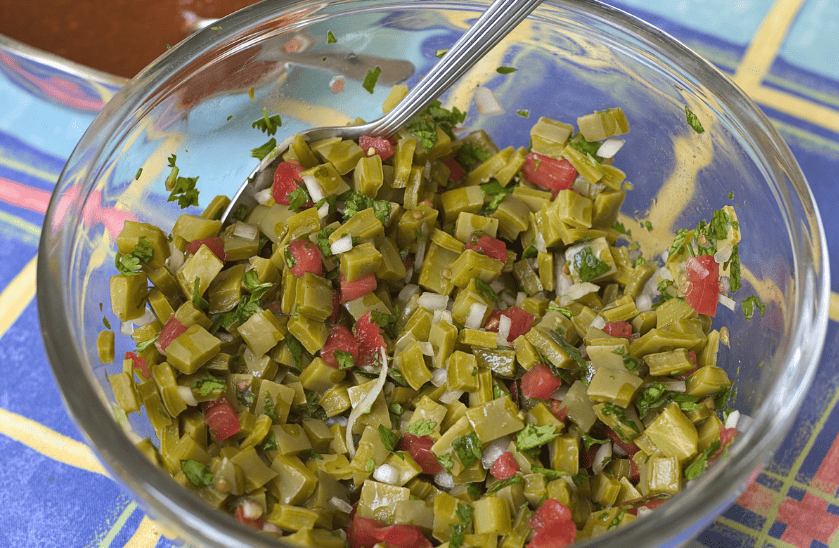
Edible cacti offer a distinct culinary experience with unique flavors and a host of nutritional benefits. This FAQ section sheds light on their taste profiles, nutrition, and cultivation tips for potted varieties.
Can you describe the taste profile of commonly consumed edible cacti?
Commonly consumed edible cacti such as the prickly pear have a taste often compared to a cross between watermelon and bubblegum, with a hint of tartness.
The Peruvian apple cactus has a similar sweet profile with a crisp texture. These succulent flavors can add a touch of exoticism to various dishes and cuisines.
What are the nutritional benefits associated with incorporating edible cacti into one’s diet?
Edible cacti, like the prickly pear, are rich in fiber, antioxidants, and vitamins such as vitamin C.
They are known to offer nutritional benefits such as aiding digestion, lowering cholesterol, and potentially regulating blood sugar levels, making them a beneficial addition to a balanced diet.
How does one care for variegated Prickly Pear cacti to ensure they remain edible and healthy?
Caring for variegated prickly pear cacti involves ensuring they are grown in soil with the correct pH level, ideally between 6.0 and 7.0.
Proper soil conditions are crucial for their growth.
These cacti require plenty of sunlight and minimal watering as they are drought-resistant plants.
In which climates or regions can you successfully grow edible cacti in pots?
Edible cacti thrive in arid, warm climates but can also be cultivated in pots in cooler regions if they are protected from frost and provided with adequate sunlight.
In climates that experience colder seasons, potted edible cacti should be brought indoors or placed in a greenhouse to maintain the necessary warmth for their development.

